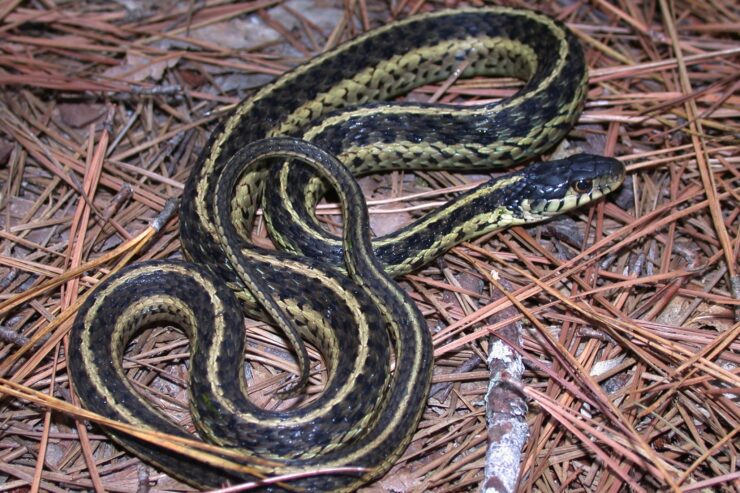Distinguishing Features – Non-venomous. Overall colouration, light brown to black with two alternating rows of black spots. Three longitudinal stripes run length of body; dorsal stripe is usually yellow. Lateral stripes are cream to yellow and are located on the second and third scale rows. A row of black spots usually occurs below the lateral stripes. The belly may be white, yellowish, or bluish. The head is brown or black with one or two small yellow dots near the parietals scales atop the head. The scales are keeled and the anal plate is single.
Size

35.5 – 122 cm (14 – 48 in)
Habitat
Common throughout Northwestern Ontario. The eastern garter snake can be found almost anywhere there is adequate food and shelter; they are extremely adaptable to environmental changes, however, they prefer moist habitats, and may be found along shorelines; also open plains, grasslands, and forests or forest edge; sometimes parklands, vacant lots, farmlands, or suburban backyards.
Breeding
Garter Snakes breed in the spring and the young are born alive in late summer or autumn; there may be 10-70 or more in a litter.
Notes

Eastern garter snakes are voracious feeders and will eat anything they can catch and swallow; earthworms, fish, frogs, toads, salamanders, mice, and birds’ eggs are primarily consumed. They will also eat carrion and dead animals of many kinds that are small enough to swallow. They eat their prey without constriction or venom, overpowering their prey with speed and strong jaws.
Hibernation begins in late October. The species uses any place they can get below the frost line. Road embankments, mammal burrows, and and even dug-out basements are common hibernaculums.

